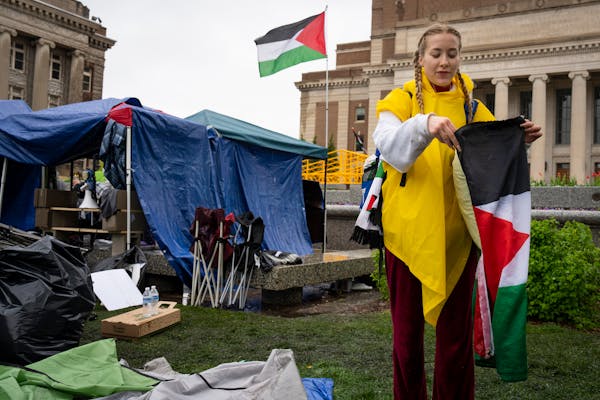It's just one new room with four poofy chairs, extending outward toward a park from the public library in New Prague.But its formal dedication, over the holidays, drew quavers of emotion from Joseph Tikalsky, the farmer whose gigantic donation helped make it possible.
And, for a single room just off a small-town Main Street, it is suspiciously sophisticated, from the delicate stained maple of its walls and ceiling to its dramatic wall-sized photograph to the rugged warmth of its maple floor. And in fact it was the creation of a lead partner in one of the state's most highly regarded architecture firms -- an outfit responsible for such celebrated projects as the Mill City Museum in downtown Minneapolis.
"The first version we saw was too fancy-pants," said Emma Jean Tikalsky, Joseph's wife. "We said, 'She wasn't like that -- she was agricultural.'"
"She," meaning the woman the new reading room is designed to honor: Mary Jo Tikalsky, Joseph's grandmother, a Czech immigrant.
Two years ago, the Tikalskys, anticipating the proceeds from the sale of a piece of their land for development, met with the town's mayor, the head of the Scott County library system and others to talk about what their $100,000 gift might yield by way of an add-on to the library.
The gift was meant to achieve a number of aims.
• First, it would honor an indomitable pioneer, "a woman like no one I've ever met before, way ahead of her time," in the words of Emma Jean. "We now live on land that was hers."
Mary Jo Tikalsky raised a family of six as a widow and operated farms and businesses alike, leaving substantial wealth to the kids.
Addressing a gathering of family, friends and dignitaries on Christmas week, after a short speech in which her husband fought to keep his composure, Emma Jean spoke to Mary Jo directly, saying the room means to "honor you and tell the world of your marvelous life. ... This day is for you."
• Second, the room becomes in a modest way a repository for the town's Czech heritage, with books in the Czech language and other material. That is a shrewd way to manage the problem of smaller towns wanting to honor where they came from but without a ton of money to operate a full-fledged history center, said Janet Williams, mayor of Savage and former head of the Scott library system.
"That's why we have the Dan Patch Historical Society at the Savage library," she said, referring to the town in which the once-legendary race horse was stabled. "Some towns with historical societies, they're open Saturdays from 9 to 10 and if you're not there then, you can't get in. The council in Savage felt it had a rich history and wanted people to know about it. And it's open seven days a week."
• Third, and what may end up mattering most to the casual user, it offers a serene spot to read in a busy library.
"Libraries aren't as quiet as they used to be," said Lori Weldon, who manages the New Prague branch. "We don't 'shish' people these days until it gets really bad. I have people just spending time back here, reading. I saw some high school kids once, sprawled out on the rug with a big, old, bound volume of the New Prague Times, feeling very much at home."
The look of the room is the work of architect Tom Meyer, of Meyer Scherer Rockcastle, who described the micro-sized commission as "a rare opportunity for a hometown kid to do something meaningful for his community."
It was his idea to cover an entire wall with a blown-up photo depicting the type of ship in which Mary Jo's parents came over to this country in steerage, and in which she was born. It took three tries to make the blow-up come out right, said Emma Jean.
One melancholy note: Few in New Prague can any longer read material in Czech. "There was one person at the dedication ceremony who does read Czech, and teaches it," Joseph said. "I understand a little, but I can't read it or speak it."
David Peterson • 952-882-9023

Wolves vs. Nuggets series updates: Times for first four games set
Medical examiner identifies pedestrian hit by vehicle and killed in Bloomington
Souhan: A sausage? A knee surgery? Minnesota sports has gone mad

